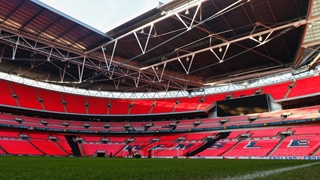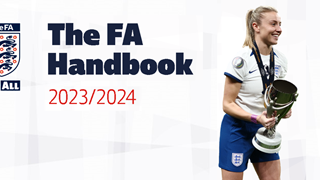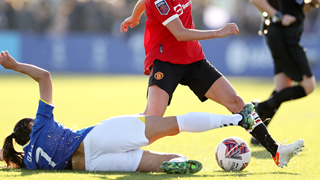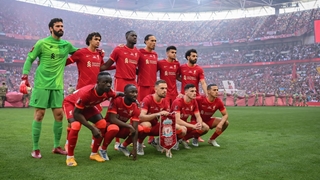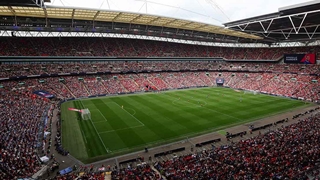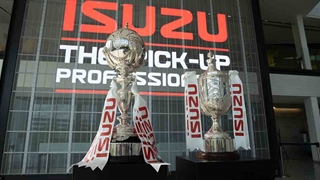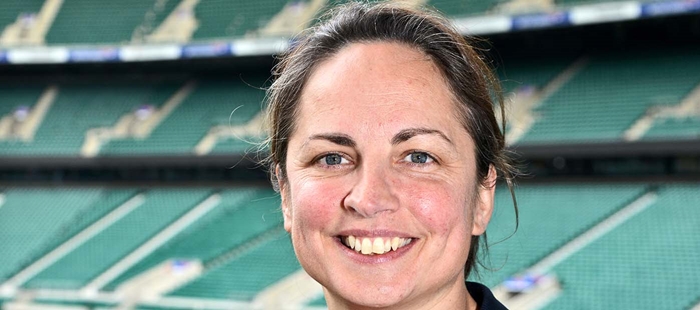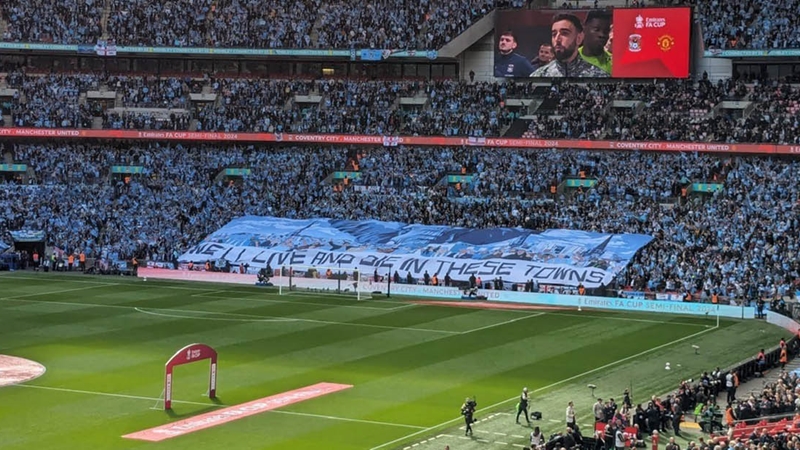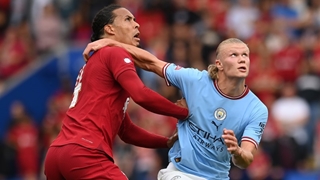
Direct and indirect free kicks and penalty kicks can only be awarded for offences committed when the ball is in play.
1. Direct free kick
A direct free kick is awarded if a player commits any of the following offences against an opponent in a manner considered by the referee to be careless, reckless or using excessive force:- charges
- jumps at
- kicks or attempts to kick
- pushes
- strikes or attempts to strike (including head-butt)
- tackles or challenges
- trips or attempts to trip
- Careless is when a player shows a lack of attention or consideration when making a challenge or acts without precaution. No disciplinary sanction is needed
- Reckless is when a player acts with disregard to the danger to, or consequences for, an opponent and must be cautioned
- Using excessive force is when a player exceeds the necessary use of force and endangers the safety of an opponent and must be sent off
- a handball offence (except for the goalkeeper within their penalty area)
- holds an opponent
- impedes an opponent with contact
- bites or spits at someone on the team lists or a match official
- throws an object at the ball, opponent or match official, or makes contact with the ball with a held object
See also offences in Law 3
HANDLING THE BALL
For the purposes of determining handball offences, the upper boundary of the arm is in line with the bottom of the armpit. Not every touch of a player’s hand/arm with the ball is an offence.
It is an offence if a player:
- deliberately touches the ball with their hand/arm, for example moving the hand/arm towards the ball
- touches the ball with their hand/arm when it has made their body unnaturally bigger. A player is considered to have made their body unnaturally bigger when the position of their hand/arm is not a consequence of, or justifiable by, the player’s body movement for that specific situation. By having their hand/arm in such a position, the player takes a risk of their hand/arm being hit by the ball and being penalised
- scores in the opponents' goal:
- directly from their hand/arm, even if accidental, including by the goalkeeper
- immediately after the ball has touched their hand/arm, even if accidental
The goalkeeper has the same restrictions on handling the ball as any other player outside the penalty area. If the goalkeeper handles the ball inside their penalty area when not permitted to do so, an indirect free kick is awarded but there is no disciplinary sanction. However, if the offence is playing the ball a second time (with or without the hand/arm) after a restart before it touches another player, the goalkeeper must be sanctioned if the offence stops a promising attack or denies an opponent or the opposing team a goal or an obvious goal-scoring opportunity.
2. Indirect Free Kick
An indirect free kick is awarded if a player:
- plays in a dangerous manner
- impedes the progress of an opponent without any contact being made
- is guilty of dissent, using offensive, insulting or abusive language and/or action(s) or other verbal offences
- prevents the goalkeeper from releasing the ball from the hands or kicks or attempts to kick the ball when the goalkeeper is in the process of releasing it
- initiates a deliberate trick for the ball to be passed (including from a free kick or goal kick) to the goalkeeper with the head, chest, knee etc. to circumvent the Law, whether or not the goalkeeper touches the ball with the hands; the goalkeeper is penalised if responsible for initiating the deliberate trick
- commits any other offence, not mentioned in the Laws, for which play is stopped to caution or send off a player
An indirect free kick is awarded if a goalkeeper, inside their penalty area, commits any of the following offences:
- controls the ball with the hand/arm for more than six seconds before releasing it
- touches the ball with the hand/arm after releasing it and before it has touched another player
- touches the ball with the hand/arm, unless the goalkeeper has clearly kicked or attempted to kick the ball to release it into play, after:
- it has been deliberately kicked to the goalkeeper by a team-mate
- receiving it directly from a throw-in taken by a team-mate
A goalkeeper is considered to be in control of the ball with the hand(s) when:
- the ball is between the hands or between the hand and any surface (e.g. ground, own body) or by touching it with any part of the hands or arms except if the ball rebounds from the goalkeeper or the goalkeeper has made a save
- holding the ball in the outstretched open hand
- bouncing it on the ground or throwing it in the air
PLAYING IN A DANGEROUS MANNER
Playing in a dangerous manner is any action that, while trying to play the ball, threatens injury to someone (including the player themself) and includes preventing a nearby opponent from playing the ball for fear of injury.
A scissors or bicycle kick is permissible provided that it is not dangerous to an opponent.
IMPEDING THE PROGRESS OF AN OPPONENT WITHOUT CONTACT
Impeding the progress of an opponent means moving into the opponent’s path to obstruct, block, slow down or force a change of direction when the ball is not within playing distance of either player.
All players have a right to their position on the field of play; being in the way of an opponent is not the same as moving into the way of an opponent.
A player may shield the ball by taking a position between an opponent and the ball if the ball is within playing distance and the opponent is not held off with the arms or body. If the ball is within playing distance, the player may be fairly charged by an opponent.
3. Disciplinary action
The referee has the authority to take disciplinary action from entering the field of play for the pre-match inspection until leaving the field of play after the match ends (including penalties (penalty shoot-out)).
If, before entering the field of play at the start of the match, a player or team official commits a sending-off offence, the referee has the authority to prevent the player or team official taking part in the match (see Law 3.6); the referee will report any other misconduct.
A player or team official who commits a cautionable or sending-off offence, either on or off the field of play, against an opponent, a team-mate, a match official or any other person or the Laws of the Game, is disciplined according to the offence.
The yellow card communicates a caution and the red card communicates a sending-off.
Only a player, substitute or substituted player or team official may be shown the red or yellow card.
Players, substitutes and substituted players
Delaying the restart of play to show a card
Once the referee has decided to caution or send off a player, play must not be restarted until the sanction has been administered, unless the non-offending team takes a quick free kick, has a clear goal-scoring opportunity and the referee has not started the disciplinary sanction procedure. The sanction is administered at the next stoppage; if the offence was denying the opposing team an obvious goal-scoring opportunity, the player is cautioned; if the offence interfered with or stopped a promising attack, the player is not cautioned.
Advantage
If the referee plays the advantage for an offence for which a caution/sending-off would have been issued had play been stopped, this caution/sending-off must be issued when the ball is next out of play. However, if the offence was denying the opposing team an obvious goal-scoring opportunity, the player is cautioned for unsporting behaviour; if the offence was interfering with or stopping a promising attack, the player is not cautioned.
Advantage should not be applied in situations involving serious foul play, violent conduct or a second cautionable offence unless there is a clear opportunity to score a goal. The referee must send off the player when the ball is next out of play but if the player plays the ball or challenges/interferes with an opponent, the referee will stop play, send off the player and restart with an indirect free kick, unless the player committed a more serious offence.
If a defender starts holding an attacker outside the penalty area and continues holding inside the penalty area, the referee must award a penalty kick.
CAUTIONABLE OFFENCES
A player is cautioned if guilty of:
- delaying the restart of play
- dissent by word or action
- entering, re-entering or deliberately leaving the field of play without the referee’s permission
- failing to respect the required distance when play is restarted with a dropped ball, corner kick, free kick or throw-in
- persistent offences (no specific number or pattern of offences constitutes “persistent”)
- unsporting behaviour
- entering the referee review area (RRA)
- excessively using the 'review' (TV screen) signal
- delaying the restart of play
- dissent by word or action
- entering or re-entering the field of play without the referee’s permission
- unsporting behaviour
- entering the referee review area (RRA)
- excessively using the 'review' (TV screen) signal
Where two separate cautionable offences are committed (even in close proximity), they should result in two cautions, for example if a player enters the field of play without the required permission and commits a reckless tackle or stops a promising attack with a foul/handball, etc.
CAUTIONS FOR UNSPORTING BEHAVIOURThere are different circumstances when a player must be cautioned for unsporting behaviour including if a player:
- attempts to deceive the referee e.g. by feigning injury or pretending to have been fouled (simulation)
- changes places with the goalkeeper during play or without the referee’s permission (see Law 3)
- commits in a reckless manner a direct free kick offence
- handles the ball to interfere with or stop a promising attack
- commits any other offence which interferes with or stops a promising attack except where the referee awards a penalty kick for an offence which was an attempt to play the ball or for a challenge for the ball
- denies an opponent an obvious goal-scoring opportunity by committing an offence which was an attempt to play the ball or challenge for the ball and the referee awards a penalty kick
- handles the ball in an attempt to score a goal (whether or not the attempt is successful) or in an unsuccessful attempt to prevent a goal
- makes unauthorised marks on the field of play
- plays the ball when leaving the field of play after being given permission to leave
- shows a lack of respect for the game
- initiates a deliberate trick for the ball to be passed (including from a free kick or goal kick) to the goalkeeper with the head, chest, knee etc. to circumvent the Law, whether or not the goalkeeper touches the ball with the hands; the goalkeeper is cautioned if responsible for initiating the deliberate trick
- verbally distracts an opponent during play or at a restart
CELEBRATION OF A GOAL
Players can celebrate when a goal is scored, but the celebration must not be excessive; choreographed celebrations are not encouraged and must not cause excessive time-wasting.
Leaving the field of play to celebrate a goal is not a cautionable offence but players should return as soon as possible.
A player must be cautioned, even if the goal is disallowed, for:
- climbing onto a perimeter fence and/or approaching the spectators in a manner which causes safety and/or security issues
- gesturing or acting in a provocative, derisory or inflammatory way
- covering the head or face with a mask or other similar item
- removing the shirt or covering the head with the shirt
Referees must caution players who delay the restart of play by:
- appearing to take a throw-in but suddenly leaving it to a team-mate to take
- delaying leaving the field of play when being substituted
- excessively delaying a restart
- kicking or carrying the ball away, or provoking a confrontation by deliberately touching the ball after the referee has stopped play
- taking a free kick from the wrong position to force a retake
A player, substitute or substituted player who commits any of the following offences is sent off:
- denying the opposing team a goal or an obvious goal-scoring opportunity by a handball offence (except a goalkeeper within their penalty area)
- denying a goal or an obvious goal-scoring opportunity to an opponent whose overall movement is towards the offender's goal by an offence punishable by a free kick (unless as outlined below)
- serious foul play
- biting or spitting at someone
- violent conduct
- using offensive, insulting or abusive language and/or action(s)
- receiving a second caution in the same match
- entering the video operation room (VOR)
A player, substitute or substituted player who has been sent off must leave the vicinity of the field of play and the technical area.
DENYING A GOAL OR AN OBVIOUS GOAL-SCORING OPPORTUNITY (DOGSO)
Where a player commits an offence against an opponent within their own penalty area which denies an opponent an obvious goal-scoring opportunity and the referee awards a penalty kick, the offender is cautioned if the offence was an attempt to play the ball or a challenge for the ball; in all other circumstances (e.g. holding, pulling, pushing, no possibility to play the ball etc.), the offending player must be sent off.
Where a player denies the opposing team a goal or an obvious goal-scoring opportunity by a handball offence, the player is sent off wherever the offence occurs (except a goalkeeper within their penalty area).
A player, sent-off player, substitute or substituted player who enters the field of play without the required referee's permission and interferes with play or an opponent and denies the opposing team a goal or an obvious goal-scoring opportunity is guilty of a sending-off offence.
The following must be considered:
- distance between the offence and the goal
- general direction of the play
- likelihood of keeping or gaining control of the ball
- location and number of defenders
SERIOUS FOUL PLAY
A tackle or challenge that endangers the safety of an opponent or uses excessive force or brutality must be sanctioned as serious foul play.
Any player who lunges at an opponent in challenging for the ball from the front, from the side or from behind using one or both legs, with excessive force or endangers the safety of an opponent is guilty of serious foul play.
VIOLENT CONDUCT
Violent conduct is when a player uses or attempts to use excessive force or brutality against an opponent when not challenging for the ball, or against a team-mate, team official, match official, spectator or any other person, regardless of whether contact is made.
In addition, a player who, when not challenging for the ball, deliberately strikes an opponent or any other person on the head or face with the hand or arm, is guilty of violent conduct unless the force used was negligible.
Team Officials
Where an offence is committed by someone from the technical area (substitute, substituted player, sent-off player or team official) and the offender cannot be identified, the senior team coach present in the technical area will receive the sanction.
WARNING
The following offences should usually result in a warning; repeated or blatant offences should result in a caution or sending-off:
- entering the field of play in a respectful/non-confrontational manner
- failing to cooperate with a match official e.g. ignoring an instruction/request from an assistant referee or the fourth official
- minor/low-level disagreement (by word or action) with a decision
- occasionally leaving the confines of the technical area without committing another offence
CAUTION
Caution offences include (but are not limited to):
- clearly/persistently not respecting the confines of their team’s technical area
- delaying the restart of play by their team
- deliberately entering the technical area of the opposing team (non-confrontational)
- dissent by word or action including:
- throwing/kicking drinks bottles or other objects
- action(s) which show(s) a clear lack of respect for the match official(s) e.g.sarcastic clapping
- entering the referee review area (RRA)
- excessively/persistently gesturing for a red or yellow card
- excessively showing the TV signal for a VAR ‘review’
- gesturing or acting in a provocative or inflammatory manner
- persistent unacceptable behaviour (including repeated warning offences)
- showing a lack of respect for the game
SENDING OFF
Sending-off offences include (but are not limited to):
- delaying the restart of play by the opposing team e.g. holding onto the ball, kicking the ball away, obstructing the movement of a player
- deliberately leaving the technical area to:
- show dissent towards, or remonstrate with, a match official
- act in a provocative or inflammatory manner
- enter the opposing technical area in an aggressive or confrontational manner
- deliberately throwing/kicking an object onto the field of play
- entering the field of play to:
- confront a match official (including at half-time and full-time)
- interfere with play, an opposing player or a match official
- entering the video operation room (VOR)
- physical or aggressive behaviour (including spitting or biting) towards an opposing player, substitute, team official, match official, spectator or any
other person (e.g. ball boy/girl, security or competition official etc.) - receiving a second caution in the same match
- using offensive, insulting or abusive language and/or action(s)
- using unauthorised electronic or communication equipment and/or behaving in an inappropriate manner as a result of using electronic or communication equipment
- violent conduct
OFFENCES WHERE AN OBJECT (OR THE BALL) IS THROWN
In all cases, the referee takes the appropriate disciplinary action:
- reckless – caution the offender for unsporting behaviour
- using excessive force – send off the offender for violent conduct.
4. Restart of play after fouls and misconduct
If the ball is out of play, play is restarted according to the previous decision
If the ball is in play and a player commits a physical offence inside the field of play against:
- an opponent – indirect or direct free kick or penalty kick
- a team-mate, substitute, substituted or sent-off player, team official or a match official – a direct free kick or penalty kick
All verbal offences are penalised with an indirect free kick.
If the referee stops play for an offence committed by a player, inside or outside the field of play, against an outside agent, play is restarted with a dropped ball, unless an indirect free kick is awarded for leaving the field of play without the referee's permission; the indirect free kick is taken from the point on the boundary line where the player left the field of play.
If, when the ball is in play:
- a player commits an offence against a match official or an opposing player, substitute, substituted or sent-off player, or team official outside the field of play or
- a substitute, substituted or sent-off player, or team official commits an offence against, or interferes with, an opposing player or a match official outside the field of play,
play is restarted with a free kick on the boundary line nearest to where the offence/interference occurred; for direct free kick offences, a penalty kick is awarded if this is a direct free kick offence within the offender's penalty area
If an offence is committed outside the field of play by a player against a player, substitute, substituted player or team official of their own team, play is restarted with an indirect free kick on the boundary line closest to where the offence occurred.
If a player makes contact with the ball with an object (boot, shinguard etc.) held in the hand play is restarted with a direct free kick (or penalty kick).
If a player who is on or off the field of play throws or kicks an object (other than the match ball) at an opposing player, or throws or kicks an object (including a ball) at an opposing substitute, substituted or sent-off player, team official, or a match official or the match ball, play is restarted with a direct free kick from the position where the object struck or would have struck the person or the ball. If this position is off the field of play, the free kick is taken on the nearest point on the boundary line; a penalty kick is awarded if this is within the offender’s penalty area.
If a substitute, substituted or sent-off player, player temporarily off the field of play or team official throws or kicks an object onto the field of play and it interferes with play, an opponent or match official, play is restarted with a direct free kick (or penalty kick) where the object interfered with play or struck or would have struck the opponent, match official or the ball.


